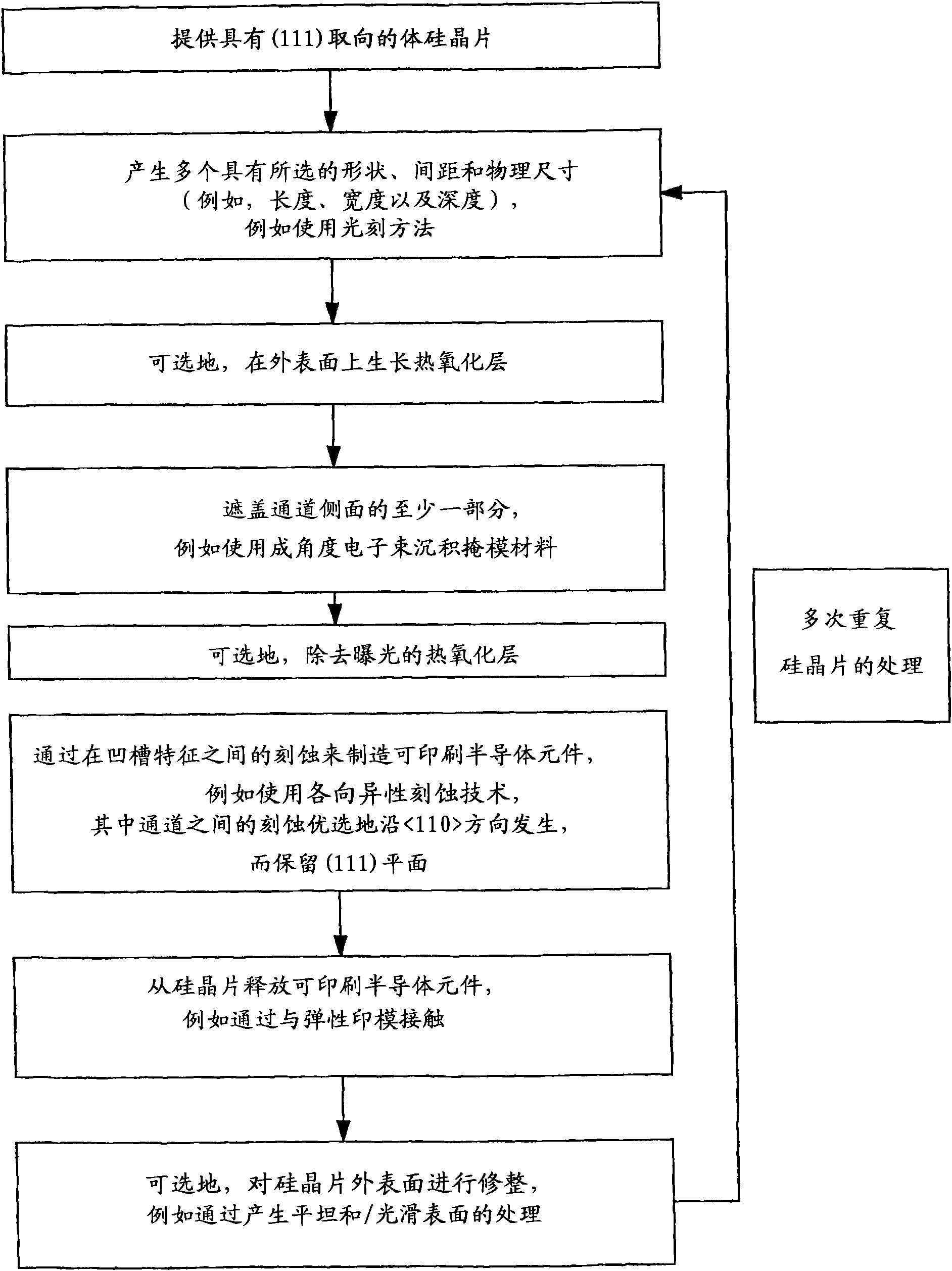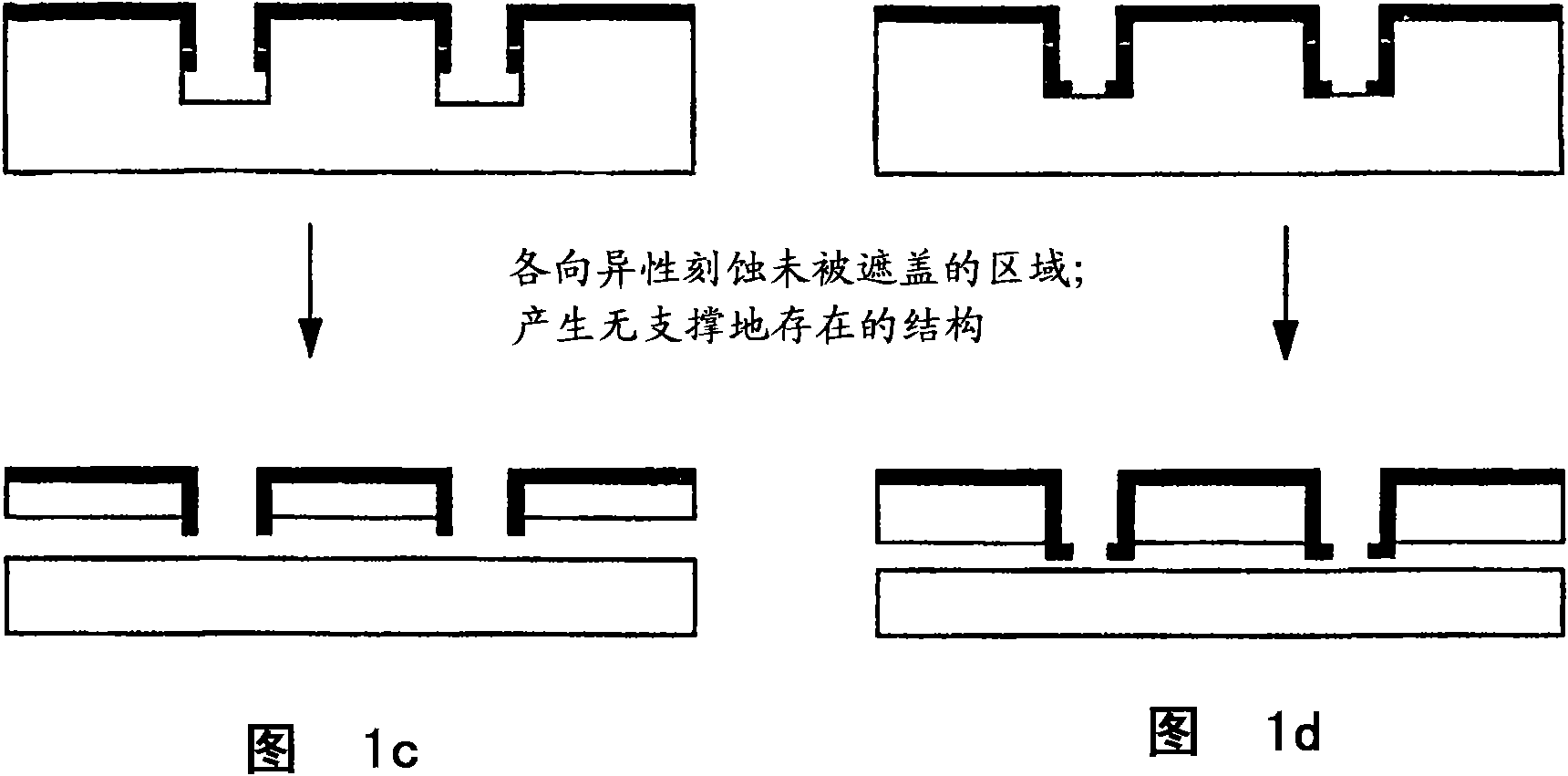Printable semiconductor structures and related methods of making and assembling
A semiconductor and structural technology, applied in the fields of printable semiconductor structures and related manufacturing and assembly, which can solve the problems of destruction, cracking, damage, etc.
- Summary
- Abstract
- Description
- Claims
- Application Information
AI Technical Summary
Problems solved by technology
Method used
Image
Examples
Embodiment 2
[0119] Example 2: Gigahertz operation of a mechanically flexible transistor on a flexible plastic substrate
[0120] The combined use of GaAs wires with ohmic contacts formed from bulk wafers, soft lithographic transfer printing techniques, and optimized device designs enables the formation of mechanically flexible transistors on low-cost plastic substrates with individual device speeds in the gigahertz range and with High mechanical bendability. The methods disclosed herein include materials that are fabricated with limited lithographic image forming resolution and registration in a simple layout. This example describes the electrical and mechanical properties of high performance transistors. These results are of great importance in certain applications including, but not limited to, high-speed communications and computing, and emerging types of large-area electronic systems ("macroelectronic devices").
[0121] Large-area flexible electronic systems (ie, macroelectronic de...
Embodiment 3
[0144] Example 3 Mechanically Flexible Thin Film Transistors Using Ultra-Thin Silicon Ribbons Harvested from Bulk Wafers
[0145] This example describes a thin-film transistor using an aligned array of thin (sub-micron) ribbons of single-crystal silicon that is patterned by lithography and bulk silicon ( 111) produced by anisotropic etching of the wafer. Devices incorporating such ribbons printed onto thin plastic substrates showed good electrical properties as well as mechanical flexibility. Effective device mobility, as estimated in the linear region, up to 360cm 2 V -1 the s -1 and on / off ratio > 10 3 . These results represent an important advance in low-cost methods for fabricating large-area, high-performance, mechanically flexible electronic systems for structural health monitoring, sensors, displays, and other applications.
[0146]Confinement-related properties and wide-ranging form factors make low-dimensional materials promising new applications in electronics,...
Embodiment 4
[0151] Example 4 Bendable GaN High Electron Mobility Transistor (HEMT) on Plastic Substrate
[0152] The emerging field of macro-electronic devices encompasses flexible large-area electronics, technology that has witnessed considerable progress over the past few years, and has several major users as well as military applications. In the near future, They are expected to be commercialized. Microelectronic circuits with novel form factors are key components of these systems, and new fabrication methods, especially printing methods, will likely be required to manufacture them. For this reason, considerable attention has been devoted to printable forms of semiconductors, and both organic (eg benzene, polythiourea, etc.) and inorganic (eg polysilicon, inorganic nanowires) materials have been investigated. The work has shown some promising results for devices integrated on plastic substrates. However, the applied current range is limited by the inherent poor performance of devices...
PUM
 Login to View More
Login to View More Abstract
Description
Claims
Application Information
 Login to View More
Login to View More - R&D
- Intellectual Property
- Life Sciences
- Materials
- Tech Scout
- Unparalleled Data Quality
- Higher Quality Content
- 60% Fewer Hallucinations
Browse by: Latest US Patents, China's latest patents, Technical Efficacy Thesaurus, Application Domain, Technology Topic, Popular Technical Reports.
© 2025 PatSnap. All rights reserved.Legal|Privacy policy|Modern Slavery Act Transparency Statement|Sitemap|About US| Contact US: help@patsnap.com



